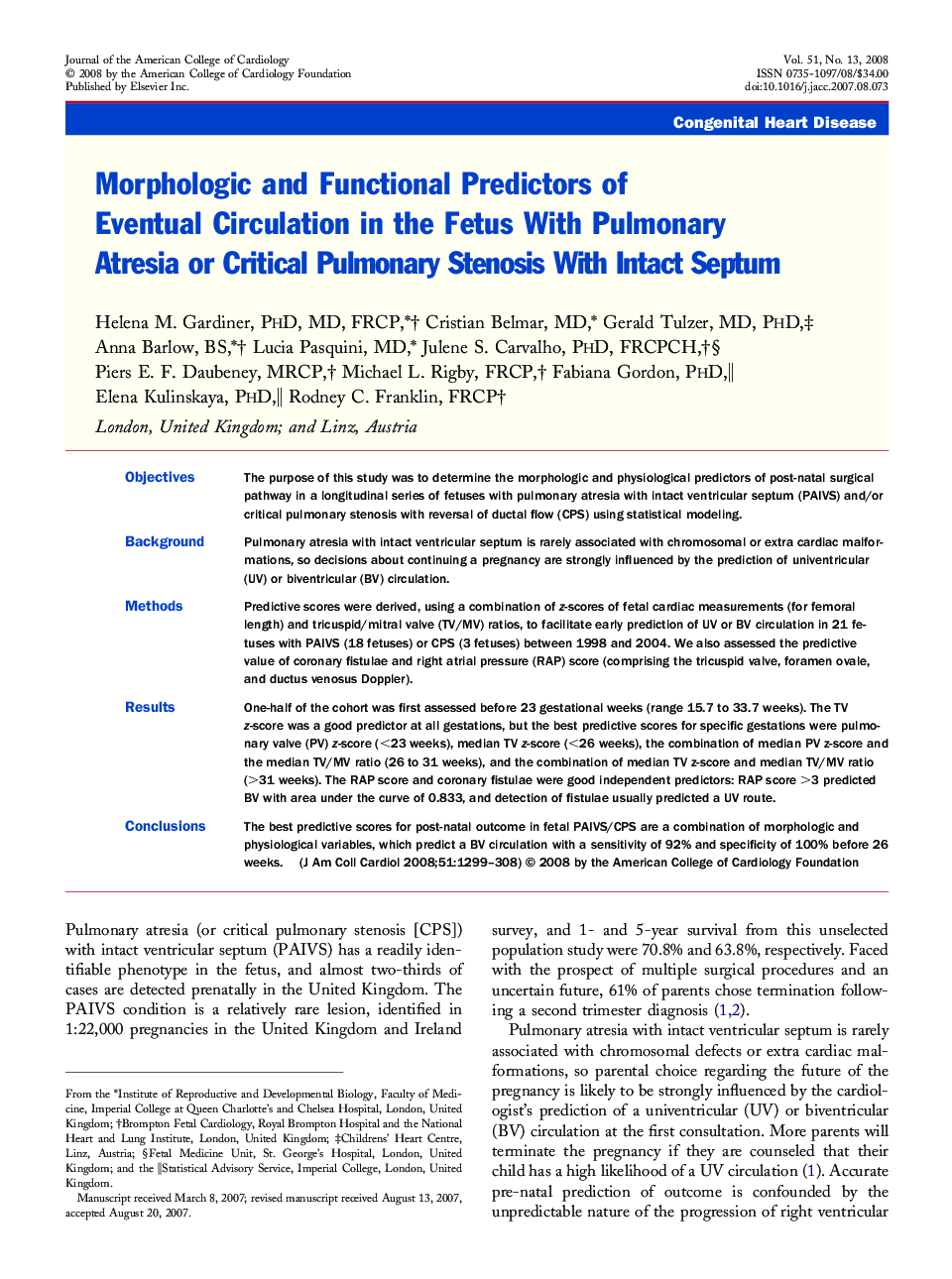| Article ID | Journal | Published Year | Pages | File Type |
|---|---|---|---|---|
| 2953917 | Journal of the American College of Cardiology | 2008 | 10 Pages |
ObjectivesThe purpose of this study was to determine the morphologic and physiological predictors of post-natal surgical pathway in a longitudinal series of fetuses with pulmonary atresia with intact ventricular septum (PAIVS) and/or critical pulmonary stenosis with reversal of ductal flow (CPS) using statistical modeling.BackgroundPulmonary atresia with intact ventricular septum is rarely associated with chromosomal or extra cardiac malformations, so decisions about continuing a pregnancy are strongly influenced by the prediction of univentricular (UV) or biventricular (BV) circulation.MethodsPredictive scores were derived, using a combination of z-scores of fetal cardiac measurements (for femoral length) and tricuspid/mitral valve (TV/MV) ratios, to facilitate early prediction of UV or BV circulation in 21 fetuses with PAIVS (18 fetuses) or CPS (3 fetuses) between 1998 and 2004. We also assessed the predictive value of coronary fistulae and right atrial pressure (RAP) score (comprising the tricuspid valve, foramen ovale, and ductus venosus Doppler).ResultsOne-half of the cohort was first assessed before 23 gestational weeks (range 15.7 to 33.7 weeks). The TV z-score was a good predictor at all gestations, but the best predictive scores for specific gestations were pulmonary valve (PV) z-score (<23 weeks), median TV z-score (<26 weeks), the combination of median PV z-score and the median TV/MV ratio (26 to 31 weeks), and the combination of median TV z-score and median TV/MV ratio (>31 weeks). The RAP score and coronary fistulae were good independent predictors: RAP score >3 predicted BV with area under the curve of 0.833, and detection of fistulae usually predicted a UV route.ConclusionsThe best predictive scores for post-natal outcome in fetal PAIVS/CPS are a combination of morphologic and physiological variables, which predict a BV circulation with a sensitivity of 92% and specificity of 100% before 26 weeks.
